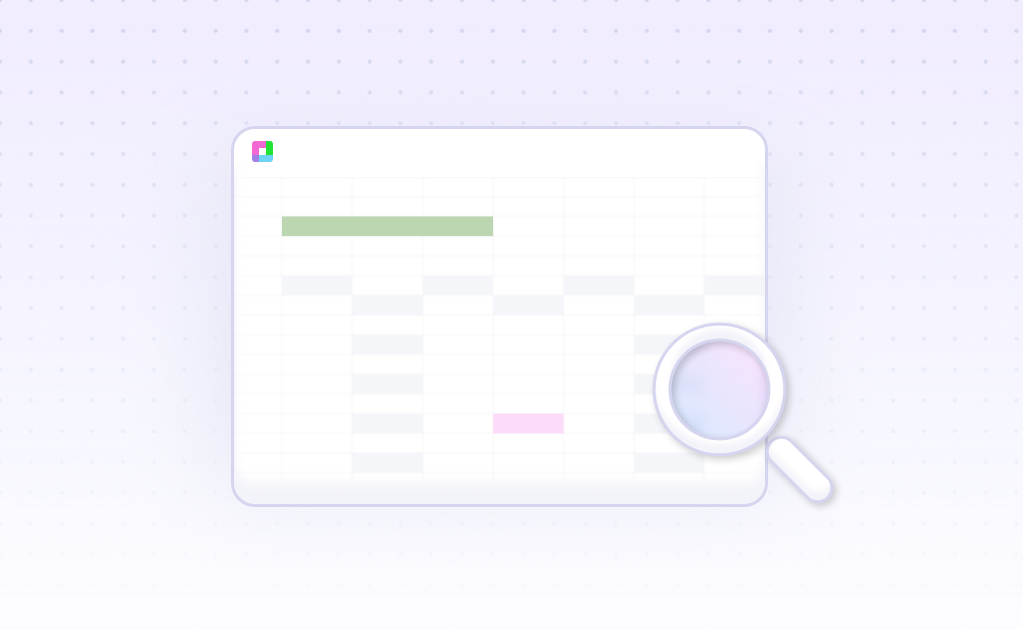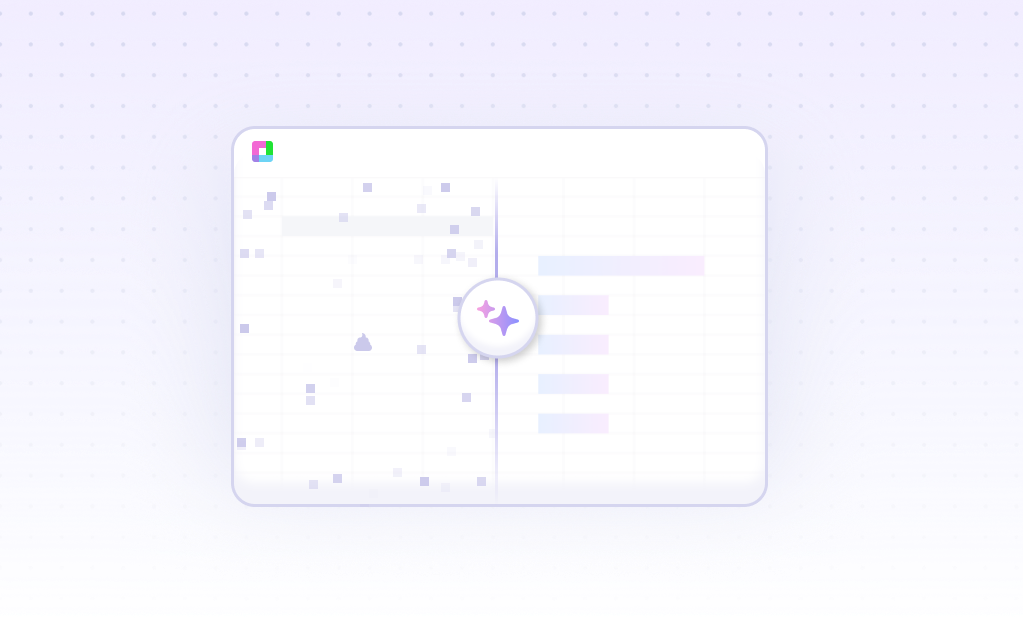
The wearable technology market is exploding, but making sense of all that data? That's where things get tricky. Whether you're tracking fitness device adoption rates, analyzing health sensor performance, or diving into smartwatch usage patterns, the sheer volume of metrics can be overwhelming.
I remember working with a team that had spreadsheets full of wearable data from multiple sources - step counts, heart rate variability, sleep patterns, device battery life, user engagement metrics. They were drowning in numbers but starving for insights. Sound familiar?
That's exactly why modern data analysis tools have become essential for technology professionals. With Sourcetable, you can transform raw wearable tech data into compelling visualizations and actionable intelligence - no coding required.
Essential Wearable Technology Metrics
Track the performance indicators that matter most in wearable tech analysis
Device Adoption Rates
Monitor how quickly users adopt new wearable devices across different demographics and market segments.
User Engagement Patterns
Analyze daily active usage, session duration, and feature utilization to understand user behavior trends.
Health Data Accuracy
Compare sensor readings against clinical standards to validate measurement precision and reliability.
Battery Performance
Track battery life degradation patterns and charging frequency across different device models and usage scenarios.
Market Penetration
Measure market share evolution and competitive positioning across different wearable categories.
Return & Satisfaction Rates
Monitor customer satisfaction scores, return rates, and support ticket volumes to gauge product success.
Real-World Wearable Tech Analysis Scenarios
See how different teams use data analysis to solve wearable technology challenges
Fitness Tracker Performance Benchmarking
A product team compared step accuracy across five different fitness trackers by analyzing data from controlled walking tests. They discovered that Device A had 97% accuracy while Device B only achieved 89%, leading to significant hardware improvements in the next generation.
Smartwatch App Usage Analytics
An app development team analyzed usage patterns from 50,000 smartwatch users to identify which features were most popular. They found that weather apps were used 3x more than fitness apps during winter months, informing their seasonal marketing strategy.
Health Sensor Validation Study
Researchers validated heart rate monitoring accuracy by comparing wearable data against medical-grade equipment across 1,000 participants. The analysis revealed that accuracy dropped by 15% during high-intensity exercise, leading to algorithm improvements.
Market Adoption Trend Analysis
A market research team tracked wearable adoption rates across different age groups over 24 months. They discovered that the 45-65 age group showed 40% faster adoption than expected, revealing an underserved market segment.
Battery Life Optimization
Hardware engineers analyzed battery performance data from 10,000 devices over 18 months to identify usage patterns that caused premature battery degradation. This led to firmware updates that extended average battery life by 30%.
Sleep Tracking Accuracy Assessment
A health tech company compared their sleep tracking algorithm against polysomnography results from 500 users. The analysis helped them identify specific sleep stages where their algorithm needed refinement, improving overall accuracy from 78% to 91%.
How to Conduct Wearable Technology Analysis
Follow this systematic approach to extract meaningful insights from your wearable tech data
Data Collection & Validation
Import data from multiple wearable devices and platforms. Clean datasets by removing outliers, handling missing values, and standardizing measurement units. Validate data quality using statistical methods to ensure reliable analysis.
Metric Definition & Segmentation
Define key performance indicators specific to your analysis goals. Segment users by demographics, device type, usage patterns, or other relevant criteria. Create standardized metrics that allow for meaningful comparisons.
Trend Analysis & Pattern Recognition
Use time-series analysis to identify adoption trends, seasonal patterns, and usage cycles. Apply statistical techniques to detect significant changes in user behavior or device performance over time.
Comparative Performance Assessment
Benchmark different devices, features, or user segments against established baselines. Use correlation analysis to understand relationships between variables like usage frequency and user satisfaction.
Predictive Modeling & Forecasting
Build models to predict future adoption rates, identify users at risk of abandoning their devices, or forecast hardware failure patterns. Use machine learning techniques to improve prediction accuracy.
Actionable Insights & Reporting
Transform analysis results into clear, actionable recommendations. Create visualizations that communicate findings effectively to stakeholders. Develop automated reporting systems for ongoing monitoring.
Common Wearable Technology Analysis Challenges
Analyzing wearable technology data comes with unique challenges that can trip up even experienced analysts. Here are the most common issues I've seen teams struggle with:
Data Inconsistency Across Devices
Different wearable devices use varying sampling rates, measurement techniques, and data formats. A fitness tracker might record heart rate every 5 seconds during exercise but only every 10 minutes at rest, while another device maintains consistent 1-minute intervals. This inconsistency makes direct comparisons challenging and requires careful data normalization.
Missing Data and Wear Time Validation
Users don't wear devices consistently. Someone might wear their smartwatch for 18 hours one day and only 6 hours the next. Without proper statistical analysis techniques, these gaps can skew results significantly. You need robust methods to identify valid wear periods and handle missing data appropriately.
Privacy and Data Anonymization
Health data is sensitive, requiring careful anonymization while preserving analytical value. Balancing privacy protection with meaningful insights demands sophisticated data handling techniques and compliance with regulations like HIPAA or GDPR.
Sensor Drift and Calibration Issues
Wearable sensors can drift over time, gradually becoming less accurate. A heart rate monitor that's perfectly calibrated at purchase might read 5-10 BPM high after six months of use. Detecting and correcting for sensor drift requires longitudinal analysis and baseline comparisons.
Why Sourcetable Excels at Wearable Tech Analysis
Discover how Sourcetable's unique features make wearable technology analysis faster and more accurate
AI-Powered Data Cleaning
Automatically detect and handle missing data, outliers, and inconsistencies common in wearable datasets. Our AI understands the nuances of health and fitness data.
Multi-Device Data Integration
Seamlessly combine data from different wearable brands and platforms. Normalize sampling rates and measurement units with simple natural language commands.
Advanced Visualization Tools
Create compelling charts and dashboards that reveal patterns in adoption rates, usage trends, and performance metrics. Perfect for executive presentations.
Statistical Analysis Made Simple
Perform complex statistical tests and trend analysis without writing code. Ask questions in plain English and get sophisticated analytical results.
Frequently Asked Questions
What types of wearable technology data can I analyze in Sourcetable?
Sourcetable handles all common wearable data types including fitness metrics (steps, heart rate, calories), sleep data, GPS tracks, sensor readings, battery performance data, app usage statistics, and user engagement metrics. You can import data from CSV files, APIs, or direct database connections.
How do I handle inconsistent sampling rates across different devices?
Use Sourcetable's AI to normalize data by asking questions like 'Standardize all heart rate data to 1-minute intervals' or 'Fill missing step data using linear interpolation.' The system automatically handles resampling and interpolation based on best practices for wearable data.
Can I compare performance across different wearable device brands?
Yes! Sourcetable excels at cross-device analysis. Import data from multiple brands, normalize the metrics, and create comparative visualizations. The AI can identify equivalent metrics across different data formats and help you build fair comparison frameworks.
How do I identify and remove invalid data points?
Sourcetable's AI can automatically detect common data quality issues like physiologically impossible values (e.g., 300 BPM heart rate), device malfunction periods, or non-wear time. Simply ask 'Find and flag invalid heart rate readings' or 'Identify periods when the device wasn't worn.'
What statistical methods are available for trend analysis?
Sourcetable supports time-series analysis, seasonal decomposition, correlation analysis, regression modeling, and change point detection. You can perform these analyses using natural language queries like 'Show seasonal patterns in step count data' or 'Find correlations between sleep quality and heart rate variability.'
How can I create presentations from my wearable tech analysis?
Sourcetable automatically generates professional charts, tables, and summary statistics that you can export to PowerPoint or share as interactive dashboards. The AI can even suggest the most effective visualizations for your specific dataset and audience.
Frequently Asked Questions
If your question is not covered here, you can contact our team.
Contact Us




